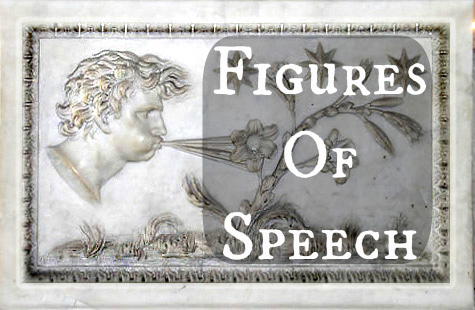You are here
Figuring Out Rhetorical Figures
Primary tabs

Ed Stevenhagen
This assignment uses online resources (Wiktionary or Silva Rhetoricae) to introduce students first hand to different rhetorical figures.
Preferrably a computer for each student group, although with sufficient instructor preparation, the exercise could be done with simply pen and paper, or even orally.
There are hundreds of rhetorical figures, some not well distinguished from the rest, and each with an impossible to remember, overly technical name. Yet learning a range of figures is invaluable to eloquent, persuasive, and swift writing. Knowing how to "rhetoricize" — an example of anthimeria — a sentence helps to speed up the composition process, and produces far more articulate and convincing texts. This assignment gives students an introduction to some of the most useful figures without delving into a lecture format.
The first thing to do is break up students into groups of 2 or 3, sending each set to a computer. Throughout the exercise, they will utilize the resources of either Wiktionary or Silva Rhetoricae to look up the defintion and examples of each term. Once the students are settled, the instructor should give the class as a whole an example sentence to manipulate throughout the assignment with each of the rhetorical figures. In my own class, we have a running joke about my pompadour, so the sentence I have used is:
Jake has a big problem — he ran out of hair gel this morning, and so his pompadour has fallen flat.
Next, give each group a single rhetorical figure to look up. They should write down the definition, any examples the website gives, and then rewrite the example sentence employing the rhetorical figure. After a few minutes, the groups will turn around and present their work to the class as a whole, providing the definition of the term and their own example. Once the first round is finished, the instructor should give each group a new figure of speech, and the process should be repeated. In my own classes, I have always tried to give each group 4 different figures throughout the time period.
In previous classes, I have used the following list of schemes and tropes:
Schemes / Changes in Arrangement — alliteration; anastrophe; anaphora; asyndeton; chiasmus; epistrophe; isocolon; synonymia
Tropes / Changes in Meaning — antanaclasis; anthimeria; anthypophora; antonomasia; hyperbole; metaphor; proslepsis; synecdoche
So, for example, using proslepsis to rewrite the aforementioned example sentence, the students might produce something like: It would be as poor form as the shape of Jake's pomp to point out what a problem his running out of hair gel has become. Or, to use antonomasia: The Instructor has a big problem — he ran out of Dapper Dan's, and so his pompadour has fallen flat.
Before class, the instructor would need to both decide on a list of rhetorical figures for the students to look up and work with, as well as devise an example sentence to be manipulated. The flexibility of the latter is crucial, so the instructor should try to re-work the sentence on her own with each figure before class meets.
Once you have accessed either Wiktionary or Silva Rhetoricae, simply look up each term that the instructor gives your group. Write down whatever definition the website gives, any examples, and then use the term to rewrite the example sentence. When finished, present your work to the class.
This is an ungraded assignment. All that matters is worthwhile and engaged participation. However, I do ask that all future papers after this exercise is finished consciously incorporate more rhetorical figures, which I do look for and grade accordingly.
So long as the example sentence is in and of itself somewhat interesting, my students have always found this a fun and worthwhile exercise.
-

- Log in to post comments

